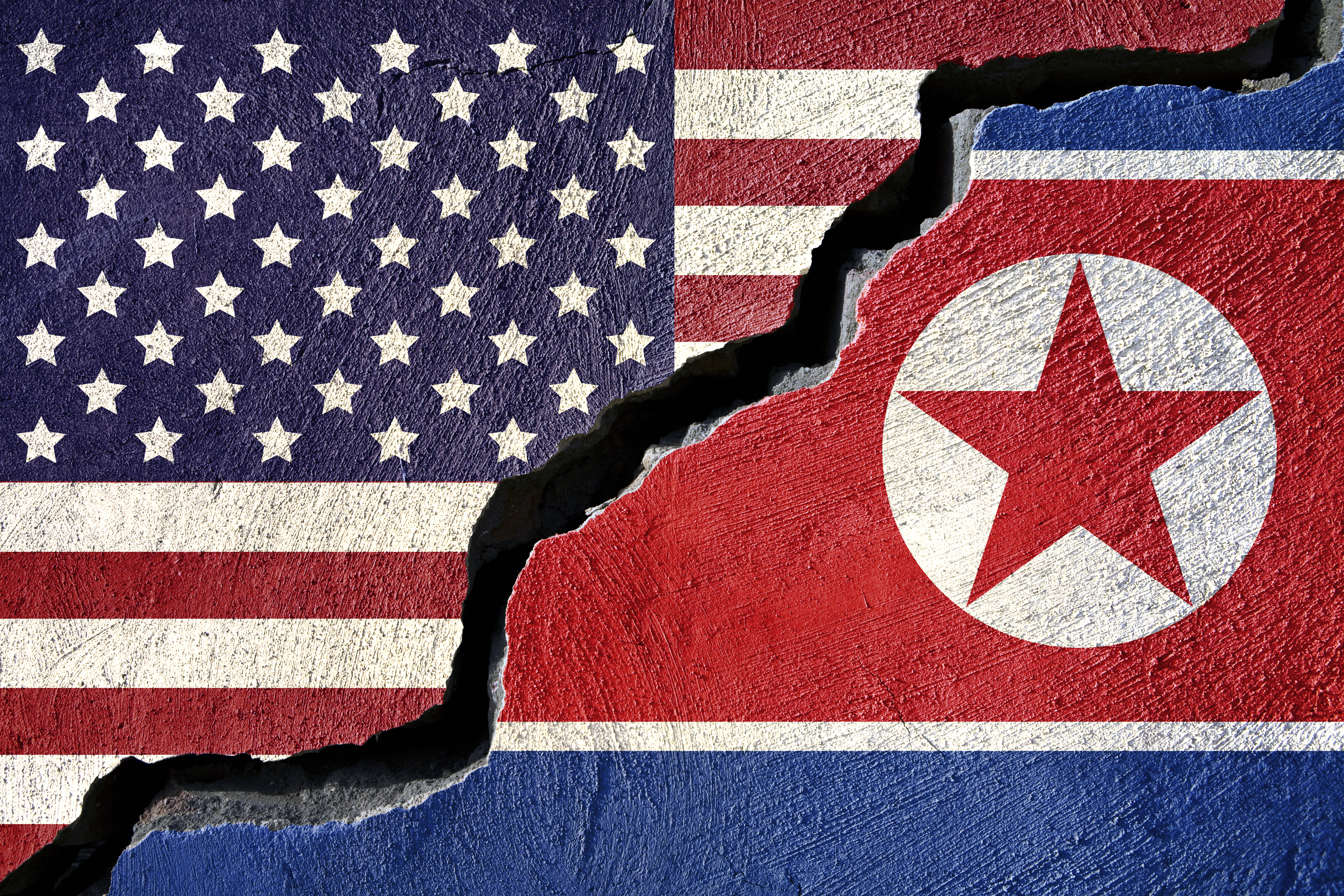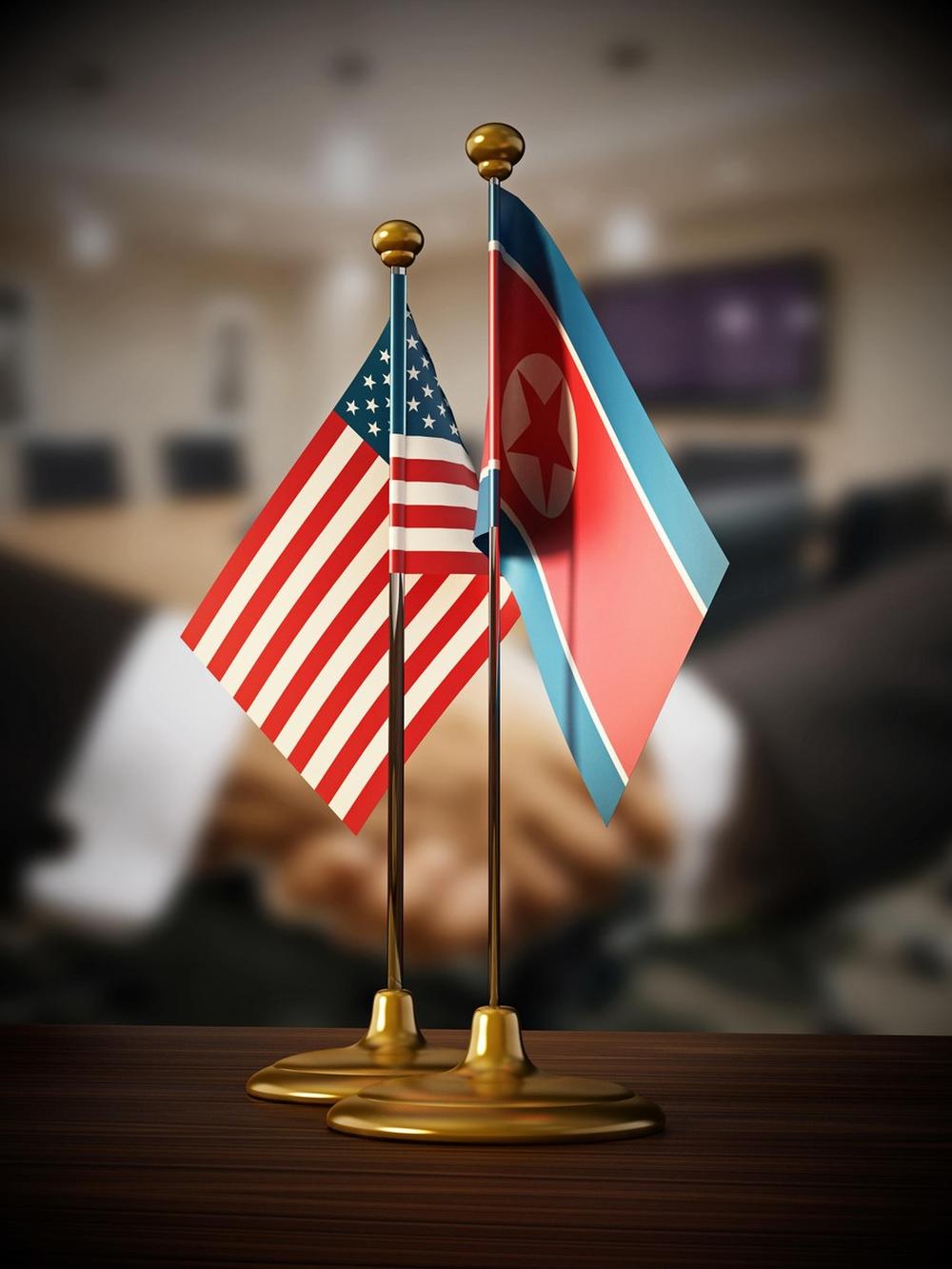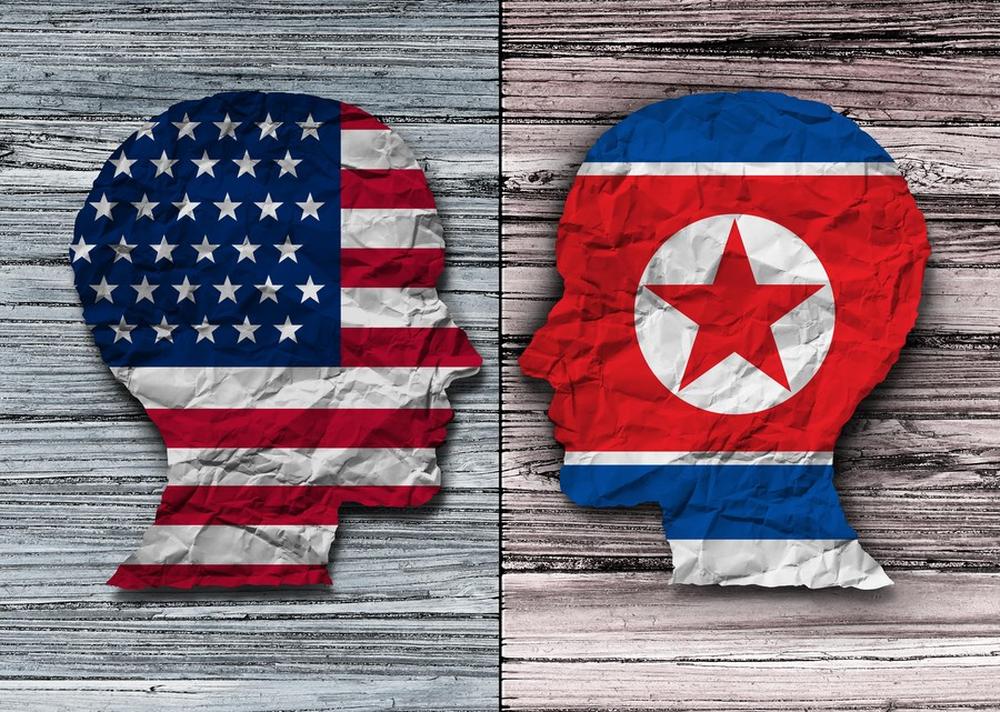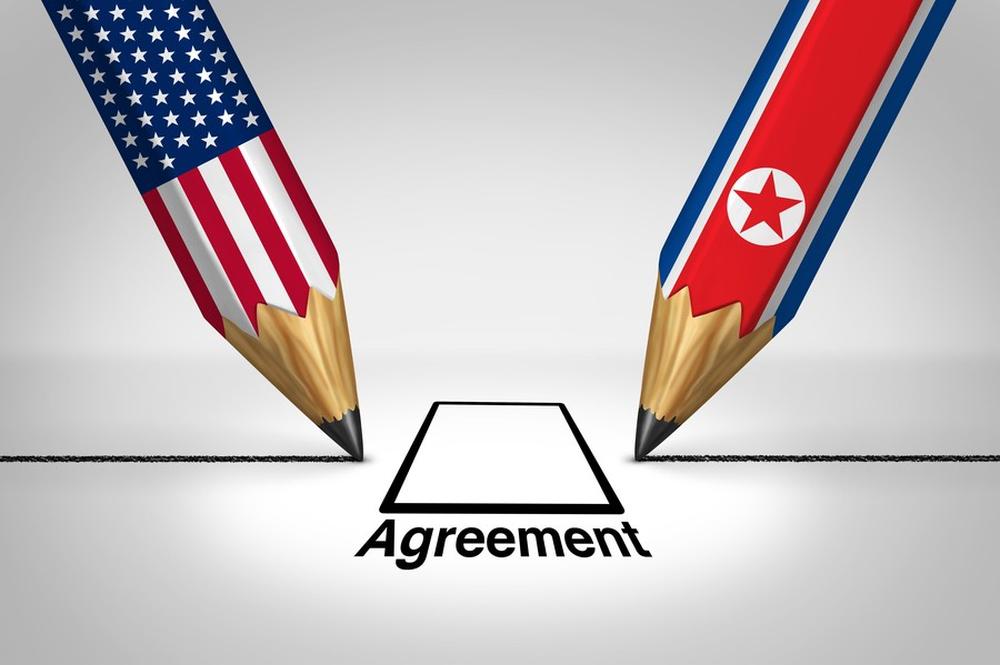- #Biden Administration
- #Nuclear Weapons
- #US-DPRK
- #Denuclearization
- #Yongbyon
- #BM
- #ICBM
- #Freeze
- #Yongbyon

► The Biden Administration has stated that it would pursue a phased approach, indicating that an interim agreement may be possible in the future.
► With this in consideration, Dr. Samore proposes the following three potential options for an initial interim agreement: (1) a complete “freeze” of its nuclear and missile programs in exchange for partial sanctions relief; (2) the permanent dismantling of all nuclear material production facilities at Yongbyon and halting of rocket testing in exchange for the removal of five sanctions resolutions; and (3) a permanent ban on North Korea’s nuclear and long-range missile testing.
► For more detailed insight into the options and obstacles of U.S.-DPRK negotiations, continue reading.
If Chairman Kim Jung Un eventually accepts President Biden’s offer to resume U.S.-DPRK denuclearization negotiations, what kind of initial deal might be possible? The Biden administration has already indicated that it won’t seek a “grand bargain” or “comprehensive deal” to completely dismantle North Korea’s nuclear, chemical, biological, and ballistic missile programs within a specified time period.[1] Instead, the administration has decided to pursue a phased approach of partial steps or interim deals until full denuclearization is achieved. As expressed in the U.S.-ROK Leaders’ Joint Statement of May 21, 2021, the U.S. will take a “calibrated and practical approach that is open to and will explore diplomacy with the DPRK to make tangible progress.”[2]
There are several possible options for an initial interim agreement that would constrain North Korea’s nuclear and missile programs in exchange for economic cooperation, partial sanctions relief and political actions toward peace on the Korean peninsula. The most ambitious initial agreement would be a “freeze” on North Korea’s nuclear and missile programs. Primarily, a freeze would require North Korea to verifiably end production of fissile material (plutonium and enriched uranium) at the Yongbyon Nuclear Research Center and at its undeclared enrichment facilities outside Yongbyon, as well as a halt to additional nuclear weapons and ballistic missile testing. A halt to fissile material production would be the first step towards dismantlement of these facilities under international monitoring, in exchange for additional actions by the U.S. and its allies.
The main obstacle to a freeze is that North Korea has shown no willingness to halt fissile material production or even acknowledge that undeclared enrichment facilities exist, much such less allow international access to these facilities. From North Korea’s standpoint, such a freeze on fissile material production would effectively limit the size of its nuclear arsenal by preventing the production of additional nuclear weapons. Under current circumstances, Pyongyang is concerned about the survivability of its nuclear deterrent, and does not seem prepared to cap its nuclear arsenal. Similarly, given the weakness of its air force, Pyongyang does not seem willing to end testing, development and production of short and medium range ballistic missiles, which it depends on to threaten South Korea, Japan, and U.S. forces in Asia. A freeze on certain types of nuclear or missile activities would require very complicated and intrusive verification arrangements that North Korea may not accept.[3]
A more modest interim agreement could be based on the proposal that Chairman Kim presented to President Trump at their February 2019 summit in Hanoi. Speaking at a press conference after the summit, then DPRK Foreign Minister Ri Yong Ho said that North Korea offered to “permanently dismantle” all nuclear material production facilities at Yongbyon and “permanently” halt nuclear and long range rocket testing in exchange for removal of the five United Nations Security Council sanctions resolutions imposed on North Korea in 2016 and 2017.[4] According to National Security Advisor John Bolton, who was present at the meeting, President Trump tried to bargain with Chairman Kim, suggesting a percentage reduction in sanctions rather than total removal or proposing that North Korea include elimination of its long range missiles in the package, but Chairman Kim was not interested.[5] In addition, as President Trump told Chairman Kim, the North Korean proposal did not cover nuclear facilities outside Yongbyon that the U.S. was aware of. As President Trump explained in his press conference after the Hanoi summit, “They were willing to denuke a large portion of the areas that we wanted, but we couldn’t give up all of the sanctions for that… I mean, they wanted sanctions lifted but they weren’t willing to do an area that we wanted. They were willing to give us areas, but not the ones we wanted.”[6] In short, Kim Jung Un asked for too much and offered too little.
President Biden is unlikely to accept a proposal that President Trump rejected, especially because the dismantlement of Yongbyon would not prevent North Korea from continuing to produce enriched uranium to expand its nuclear arsenal.[7] Instead, the Biden administration could offer a counterproposal. For example, such a counterproposal could offer less sanctions relief in exchange for dismantlement of Yongbyon and establish a process for extending the shutdown of Yongbyon to facilities outside Yongbyon in order to eventually achieve a national freeze on fissile material production.[8] Whether Chairman Kim would accept a modified proposal is uncertain, but the subsequent economic distress in North Korea since the Hanoi Summit caused by international sanctions, COVID and natural disasters might make North Korea more amenable to a new offer.
Finally, a very modest initial step could be to codify a “permanent” ban on North Korea’s nuclear and long-range missile testing, as North Korea offered to do as part of its Hanoi proposal. In reality, a “permanent” ban is not enforceable because North Korea can always decide to resume testing, even if it joins the Comprehensive Nuclear Test Ban Treaty (CTBT). However, a UN Security Council resolution could be crafted to provide limited sanctions relief in exchange for North Korea’s commitment not to resume nuclear or long range missile tests, with a provision to automatically snap back sanctions if North Korea breaks its commitment. A potential sticking point for a test ban deal is whether the ban on long range missile tests would include satellite launches; it was disagreement over this issue that lead to the collapse of the February 2012 Leap Day deal.
Another potential issue for a test ban is whether North Korea would seek to codify a ban or limit on U.S.-ROK joint military exercises in exchange for a “permanent” test ban. At the Singapore Summit with Chairman Kim in June 2018, President Trump announced that the U.S. would stop its “war games” with the ROK.[9] Since then, the U.S. and ROK have held “table top” joint exercises involving computer simulations and small numbers of military officers, rather than large scale field exercises with troops and equipment. Even so, in his subsequent letters to President Trump, Chairman Kim has strongly complained about continuing U.S-ROK joint military exercises. In his final letter to Trump, Kim said that the joint exercises prevented him from resuming U.S.-DPRK nuclear negotiations - as Trump and Kim agreed at their brief meeting in Panmunjom in June 2019.[10] Given its emphasis on restoring U.S. alliances, the Biden administration is unlikely to accept any formal linkage between U.S.-ROK military exercises and a North Korean test ban.
In conclusion, there are a number of potential initial agreements that the U.S. and DPRK might consider if and when U.S.-DPRK nuclear negotiations resume. Unfortunately, the more ambitious proposals in terms of scope and significance are the most difficult to achieve. North Korea is not likely to accept a nuclear or missile “freeze” in exchange for offers of substantial sanctions relief and political measures. The U.S. is not likely to accept a standalone deal to dismantle Yongbyon in exchange for major sanctions relief, as Chairman Kim proposed to President Trump in Hanoi. Given these difficulties, it might make more sense to start with a very modest initial agreement, such as codifying the current North Korean moratorium on nuclear and long range missile tests in exchange for modest sanctions relief and political gestures to improve bilateral U.S.,-DPRK relations, such as an end of war declaration or establishment of formal diplomatic relations between the U.S. and DPRK. Whether such a modest beginning will eventually bear more significant achievements in the future is impossible to say.
[1] John Hudson and Ellen Nakashima, “The Biden administration forges new path on North Korea crisis in wake of Obama and Trump failures”, Washington Post, April 30, 2021. https://www.washingtonpost.com/national-security/biden-administration-forges-new-path-on-north-korea-crisis-in-wake-of-trump-and-obama-failures/2021/04/30/c8bef4f2-a9a9-11eb-b166-174b63ea6007_story.html
[2] https://www.whitehouse.gov/briefing-room/statements-releases/2021/05/21/u-s-rok-leaders-joint-statement/
[3] See Gary Samore, “Vexations of Verification” in Overholt, William, ed. North Korea: Peace? Nuclear War? (Mossavar-Rahmani Center for Business and Government, Harvard Kennedy School, 2019), pp. 230-243.
[4] Minister Ri Yong Ho press conference, Hanoi, Vietnam March 1, 2019. https://www.youtube.com/watch?v=o-NWGHQt_rk
[5] John Bolton, The Room Where it Happened: a White House Memoir, New York: Simon and Schuster, 2020.
[6] President Donald Trump press conference, Hanoi, Vietnam, February 28, 2029. https://www.politico.com/story/2019/02/28/transcript-trump-press-conference-vietnam-1195529.
[7] For an assessment of the technical significance of dismantling Yongbyon, see Gary Samore, “How Significant is the Dismantlement of Yongbyon?” 38 North, March 11, 2019, https://www.38north.org/2019/03/gsamore031119/
[8] See Robert Einhorn, “U.S.-DPRK Negotiations: Time to Pivot to an Interim Deal”, 38 North Special Report, August 2019. https://www.brookings.edu/wp-content/uploads/2019/08/fp_20190809_dprk.pdf.
[9] President Trump press conference, Singapore June 12, 2018. https://www.vox.com/world/2018/6/12/17452624/trump-kim-summit-transcript-press-conference-full-text
[10] Robert Carlin, “The Real Lessons of the Trump-Kim Love Letters”, Foreign Policy, August 13, 2021. https://foreignpolicy.com/2021/08/13/north-korea-trump-kim-jong-un-love-letters-diplomacy-nuclear-talks/
Dr. Samore served in the U.S. government for over 20 years, focusing on nuclear arms control and preventing the spread of nuclear weapons, especially in the Middle East and Asia. In that capacity, he served both President Clinton and President Obama as the senior official in the National Security Council responsible for nonproliferation of weapons of mass destruction. Outside government, he held senior research and administrative positions at the International Institute for Strategic Studies in London, the Council on Foreign Relations and the Belfer Center for Science and International Security at Harvard University. He holds an MA and Ph.D from the Government Department of Harvard University.


